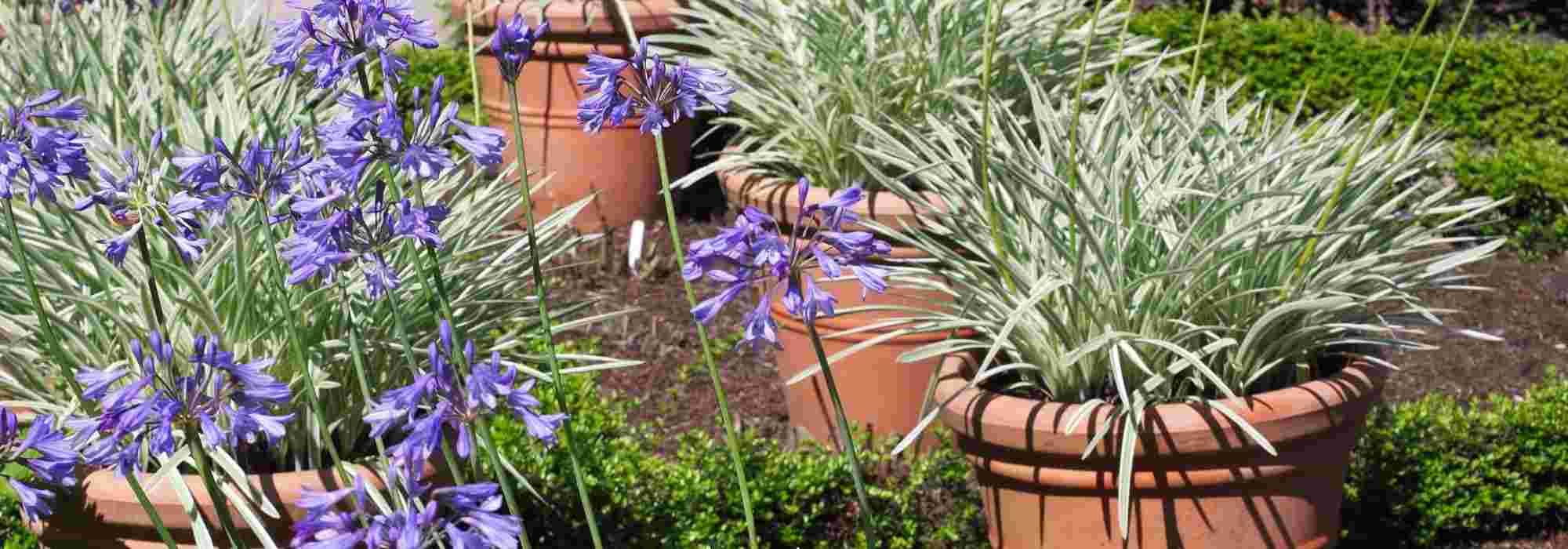
How to grow an agapanthus in a pot?
Our tips for successful planting and maintenance
Contents
The colourful umbels of agapanthus and their lush foliage with an exotic appearance integrate very well into flower beds or borders in the garden. However, the agapanthus is also a hardy perennial that is easy to grow in pots. Preferring confined spaces, it is indeed well-suited to this method of cultivation.
As some varieties are not very hardy, pot cultivation will be even more ideal to protect the plant in regions with harsh winters.
If agapanthus are simple to grow in open ground, they will require just a few extra steps to thrive and create beautiful flowering pots.
Here are our tips for planting and caring for agapanthus in pots so you can enjoy all their graphic and aesthetic benefits, even in the smallest spaces.
Which varieties of agapanthus should you choose for pot cultivation?
For pot cultivation, opt for small-sized, compact varieties of agapanthus. The dwarf agapanthus or agapanthus for pots will be perfect, thanks to their small dimensions.
This is the case, for example, with:
- the ‘Golden Drop’ agapanthus (40 cm in all directions), featuring its lovely bright variegated foliage;
- the ‘Lapis Lazuli’ agapanthus (maximum 50 cm), known for its early and long flowering;
- the ‘Enigma’ agapanthus (also maximum 50 cm), with its uncommon bicoloured flowers;
- the ‘Double Diamond’ agapanthus (not exceeding 35 cm), boasting abundant white flowers;
- the ‘Pitchoune Blue’ agapanthus (40 cm in all directions), which produces large umbels reminiscent of seaside blooms;
- the ‘Thumbelina’ agapanthus (50 cm in all directions), with its immaculate white flowers;
- the ‘Strawberry Ice’ agapanthus (65 cm tall with a spread of 50 cm), offering rare pinkish hues.
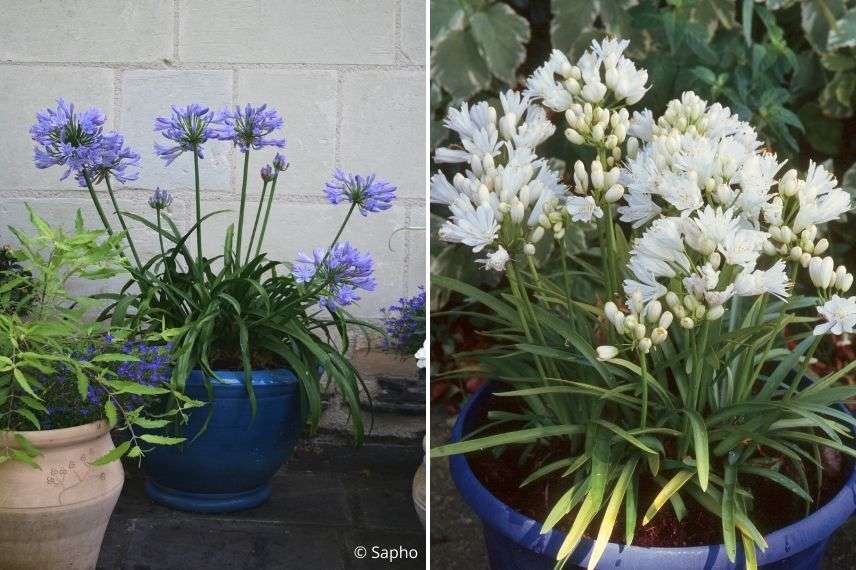
Agapanthus africanus ‘Pitchoune Blue’ and Agapanthus ‘Double Diamond’
Read also
Agapanthus: planting, growing and careWhen to plant an agapanthus in a pot?
Potted agapanthus can be planted all year round. However, the ideal time is in spring, so that the plant can be left outside throughout the beautiful season, until the first frosts.
If you have chosen a bare root agapanthus (cheaper, but not available all year round), planting should be done as soon as possible after purchase. Generally, this will take place in autumn, between November and March.
Discover other Agapanthus - Lily of the Nile
View all →Available in 0 sizes
Available in 0 sizes
Available in 2 sizes
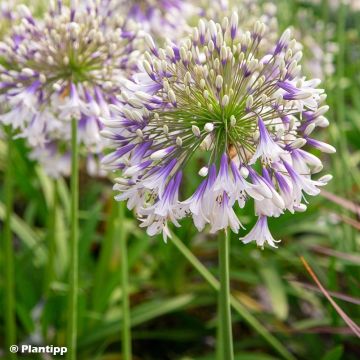
Available in 3 sizes
Available in 0 sizes
Available in 0 sizes
Available in 5 sizes
Available in 2 sizes
Available in 2 sizes
Available in 2 sizes
Planting Agapanthus in pots
Container
To plant agapanthus in pots, choose a container that is wide and stable. Agapanthus prefer to feel a bit cramped to bloom well. So do not choose a container that is too large. A pot or planter slightly larger than the root ball will suffice. To create a beautiful flowering display, plant 3 young plants in a pot with a diameter of about 30 to 40 cm.
Always use a container with drainage holes, allowing water to escape without stagnating and risking root rot.
Opt for straight containers rather than rounded ones, so that you can later divide the bulbs or repot them.
Finally, while plastic containers have undeniable qualities (price, accessibility, lightness, choice of colours), terracotta containers allow for better aeration of the substrate and prevent extreme climate variations (drought in summer, lack of insulation in winter).
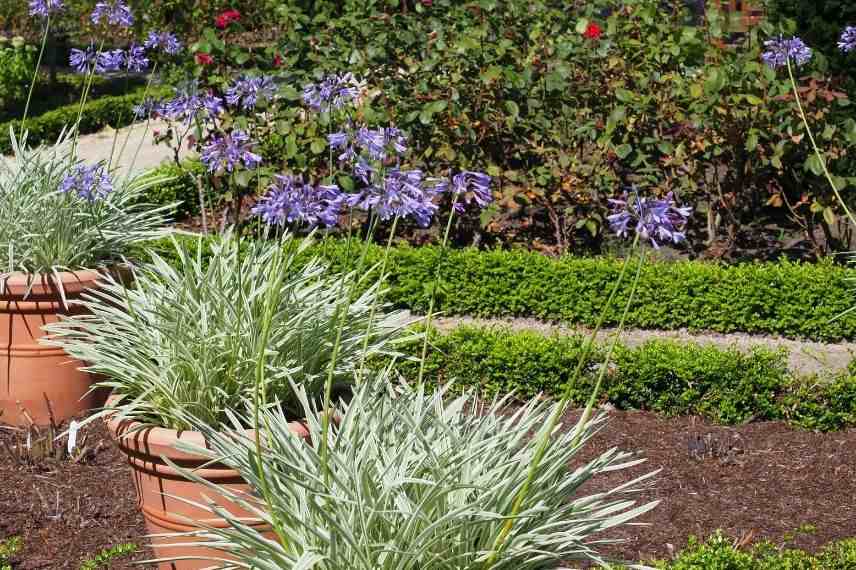
Substrate
In pots, the choice of substrate is even more important as the plant develops in a restricted space, which loses its nutritional qualities more quickly. Agapanthus appreciate substrates rich in organic matter and well-drained, not retaining stagnant water, especially during winter.
Choose a substrate composed of:
- garden soil
- potting soil for planters and pots ensuring good flowering and water retention, or well-matured kitchen compost
- a handful of sand
- a handful of pumice to lighten the mix (optional)
Planting
- Install a drainage layer of about 5 cm at the bottom of the perforated container: clay balls, gravel, or broken terracotta.
- Place the roots or root ball in the container and fill with substrate.
- Gently press down with your fingers and add more substrate if needed, until covering the stump; however, the emerging leaves should not be buried.
- Water generously.
- Mulch to limit evaporation and prevent the development of adventives (“weeds”).
You can also choose to directly sow agapanthus in spring, which can be repotted about 6 months later.
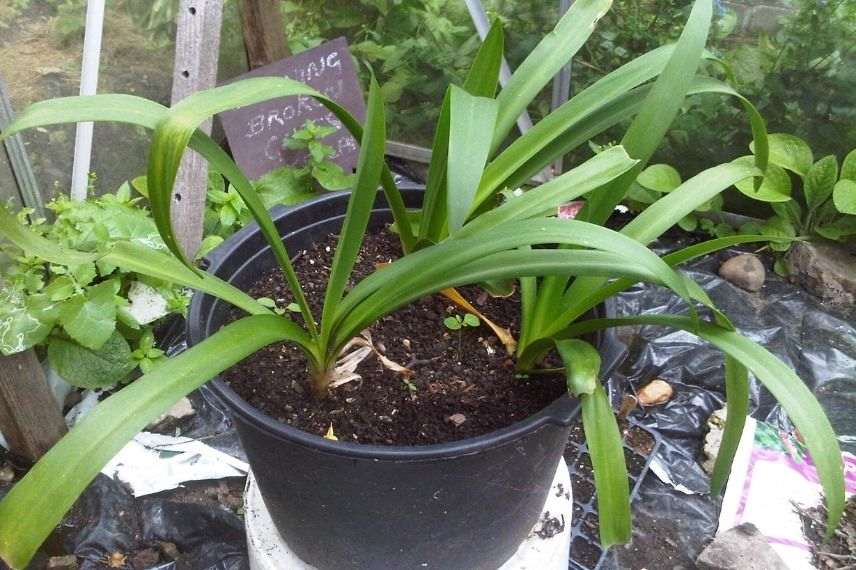
(photo Sue Luxton – Flickr)
Exposure
Originating from South Africa, agapanthus are sun-loving plants that bloom well. Place your agapanthus pot in a warm, sunny position facing south, especially in northern regions, or against a wall that retains heat. In southern regions with hot summers, a partially shaded position is acceptable.
Avoid locations exposed to prevailing winds and heavy rain. Prefer sheltered areas in the garden, on the terrace, or balcony.
Read also
Agapanthus: how to plant themCaring for potted Agapanthus
Watering
Due to their origins, agapanthus can tolerate a bit of drought. However, in pots, the substrate tends to dry out much more quickly than in open ground, as water evaporates more easily.
During growth and flowering, agapanthus have regular water needs. Plan for at least one watering per week, and two in hot, dry weather. Allow the substrate to dry out between waterings to prevent root rot.
Water preferably early in the morning or late in the day to limit evaporation.
If you notice yellowing of the agapanthus leaves in summer, it may be due to a lack of water. Conversely, if you are watering regularly and the base of the plant remains damp, it is likely an excess of water. Do not allow water to stand in the saucer, if there is one: remember to empty it after about twenty minutes and let the substrate dry well before watering again.
Fertilisation
As with water needs, agapanthus have higher nutritional requirements in pots than in open ground.
In spring, as growth resumes, apply fertiliser for containers and pots, which will promote flowering. Opt for a slow-release fertiliser (often in granules or sticks), rich in potash and phosphorus. This fertilisation can be replaced by regular applications of well-decomposed household compost.
You can also choose to fertilise your potted agapanthus with a liquid fertiliser for flowers, which acts quickly. This fertilisation should be carried out monthly from spring until the end of summer.
Dosages vary by manufacturer, so just be sure to follow the instructions on the product.
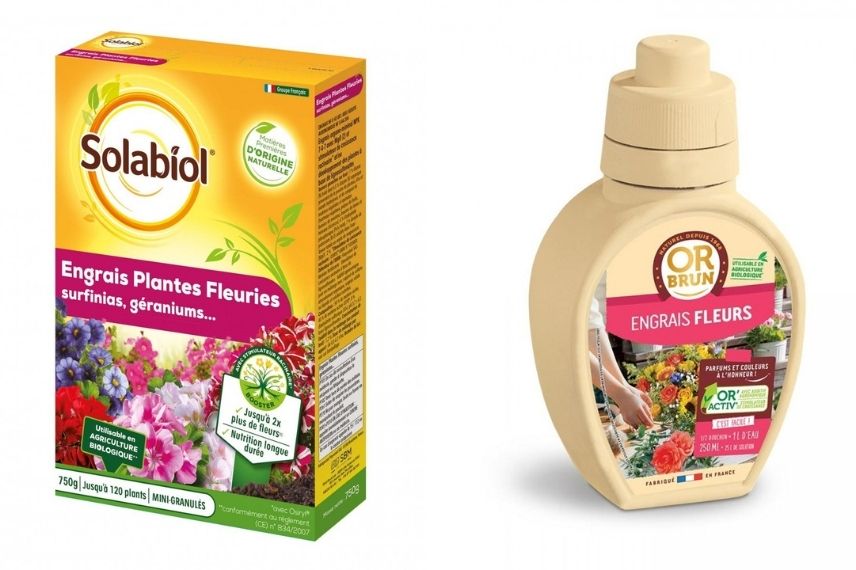
On the left, slow-release granule fertiliser and on the right, liquid fertiliser
Pruning
In summer, to stimulate flowering and prevent the agapanthus from using energy to produce seeds, remove faded flowers as they appear by cutting the stem at the base. Keep them only if you wish to collect seeds for your own sowing.
The pruning of foliage depends on the variety of agapanthus. If it is a deciduous agapanthus, whose foliage naturally falls at the end of the season, it is quite normal to see the leaves yellowing and drying out after flowering. In the following spring, once the last frosts have passed, simply cut the remaining dried leaves back to the ground using clean, sharp pruning shears.
If it is an evergreen agapanthus, simply remove any damaged leaves if there are any.
Diseases
Agapanthus are not particularly susceptible to diseases. Their only enemies may be a few voracious slugs, which will feast on the young leaves emerging in spring from the deciduous agapanthus varieties.
Division
Agapanthus can generally remain in the same container for three to four years. After this period, if they start to show signs of fatigue (shorter flower stems, weaker flowering, yellowing foliage, stump hollowing in the centre,…), we recommend dividing your plants.
This operation is carried out at the end of winter, using a clean knife. Find all the information to successfully divide agapanthus in pots.
Wintering
Due to its origins, agapanthus is a rather tender plant. Its cold resistance depends on the chosen variety. It should also be noted that a potted plant is always more sensitive to cold than a plant grown in open ground.
Evergreen agapanthus are generally hardy to -5°C to -10°C at most, in a protected and non-humid situation. Deciduous agapanthus, on the other hand, are a bit hardier, averaging -10°C to -15°C. Find our selection of the hardiest agapanthus varieties.
Outside coastal or Mediterranean regions, growing in pots is even more suitable to bring the plants indoors for protection. Place them in a bright, dry, unheated frost-free area (conservatory, cold greenhouse). Depending on the regions and the timing of winter, this operation should be carried out between October and November.
Be sure to protect agapanthus in winter if it is not possible to bring them indoors: thick mulching, cardboard or newspaper around the pot, insulation between the container and the ground, …
During this period, reduce watering, stop all fertiliser applications, and do not prune the foliage.
Potted agapanthus can be taken out as soon as the last frosts have passed. In northern regions, we recommend waiting until after the Ice Saints in mid-May.

Potted agapanthus along a path – Fenton House Garden in London (photo Tony Hall – Flickr)
- Subscribe!
- Contents
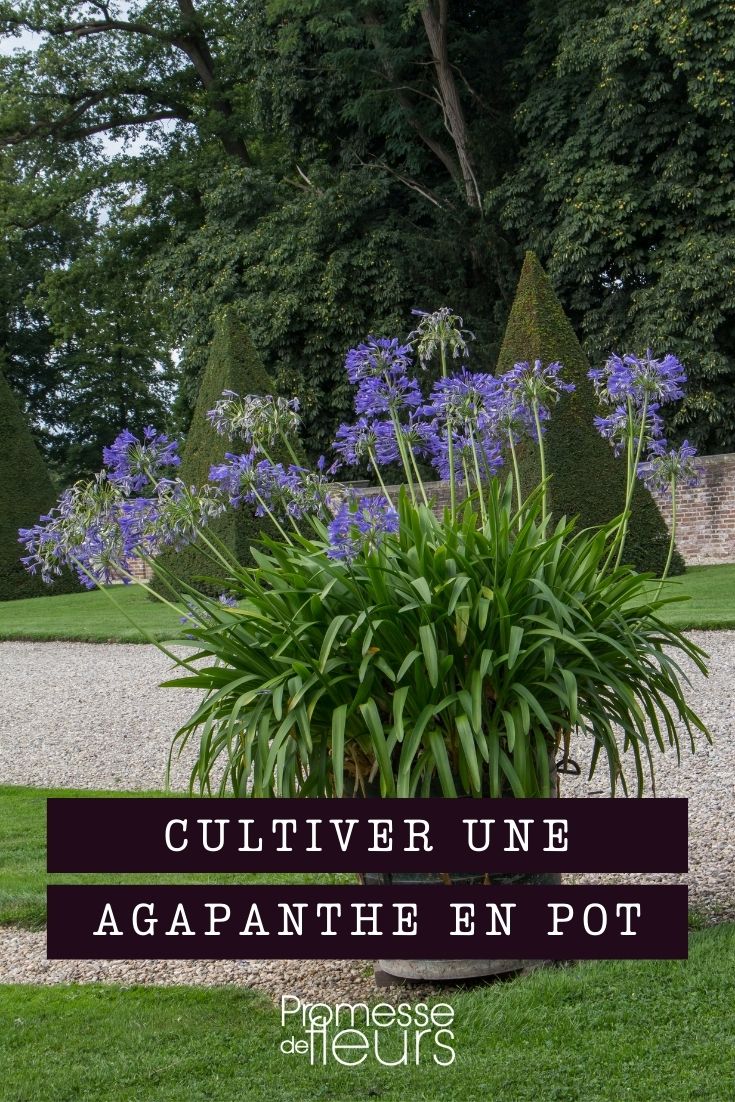































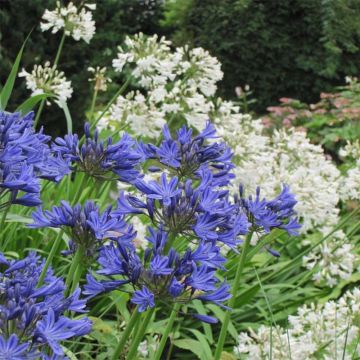
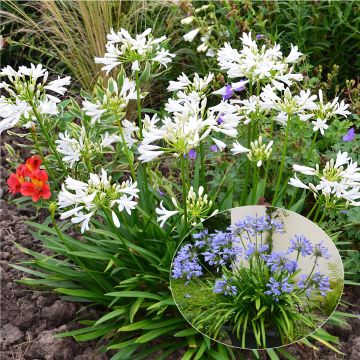
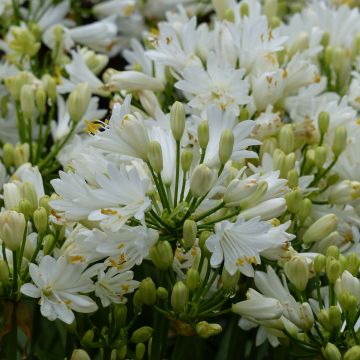
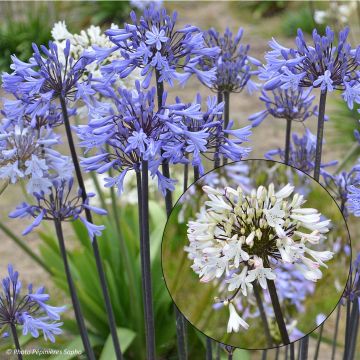
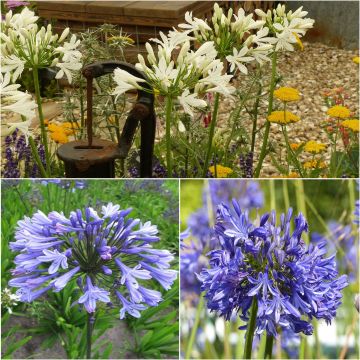
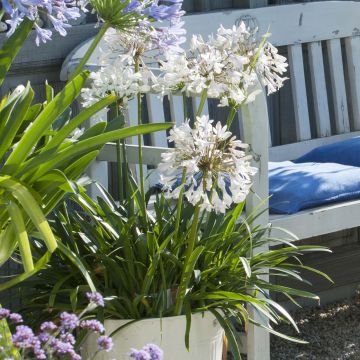
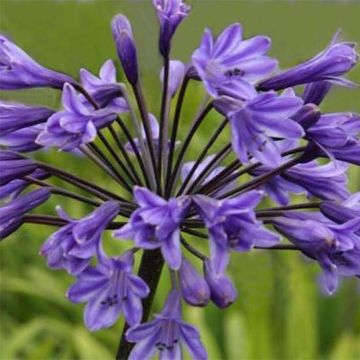
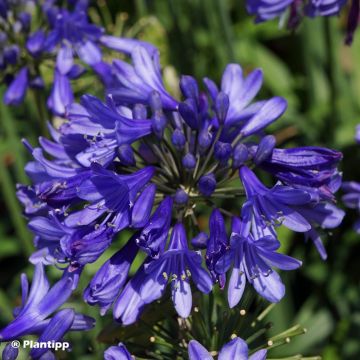
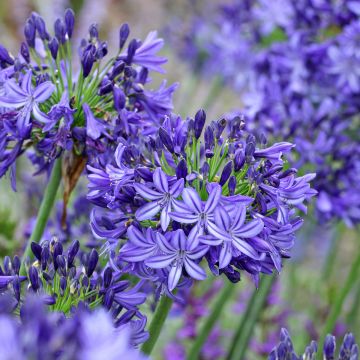
Comments